A hot cup of masala chai steams into the cool, pre-dawn darkness. Only a glimmer of indigo bleeds into the inky sky on the horizon, and all around, the shadowy teak forest stands watch.
Here, in the heart of India’s jungle in the central region of Madhya Pradesh, is the wild landscape that inspired Rudyard Kipling’s work, The Jungle Book. This is where wildlife lovers can catch a glimpse of a majestic Bengal tiger. Pench National Park is home to the highest concentration of prey out of any park in India, giving travelers a higher chance of spotting a tiger or leopard as well as a cast of other animals including dhole (wild dogs), sloth bears, monkeys, and hyenas.
While spotting a tiger in the wild is awe-inspiring, part of the magic of a tiger safari is simply immersing your senses in one of the most beautiful places on Earth. An early morning cup of tea in India’s lush, atmospheric jungle pre-game drive is just the start.
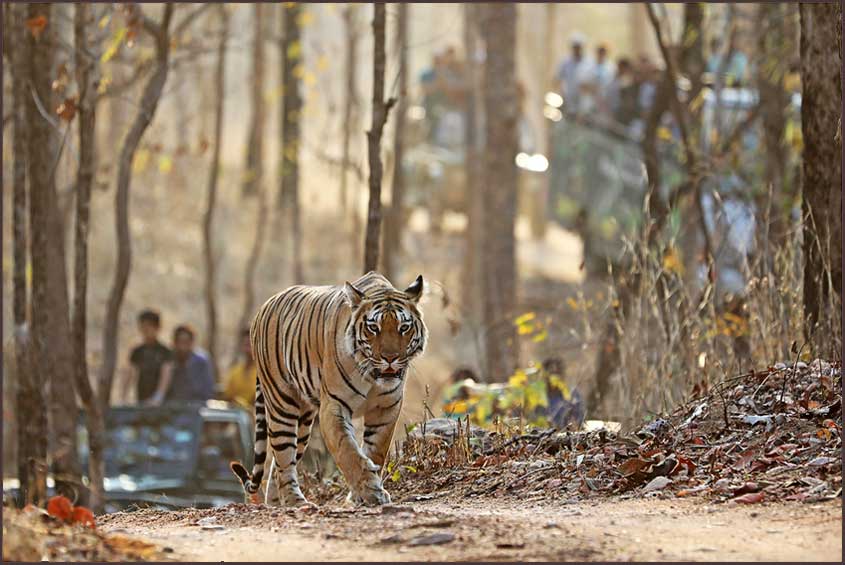
What a day on tiger safari looks like
Trundling along in an open-air jeep along dusty jungle roads just as the sun is rising is exhilarating, anticipatory energy hanging in the air. While on other safaris around the world apex predators are easily spotted in throngs, Bengal tigers are more elusive. A tiger safari requires patience as your naturalist guide puts their expertise to work, identifying pugmarks (paw prints) on the forest floor and listening to the alarm call of monkeys and birds, which alerts them to the presence of a predator.
The wait is part of the allure of this unique safari, making it all the more exciting when your eyes finally land on the tiger’s ribboning black and orange stripes weaving through the forest’s teak trees. Their strength and grace are mesmerizing. “There’s a real sense of adventure on a tiger safari,” says Amit Sankhala, owner of Jamtara Wilderness Camp, a luxury tented camp skirting Pench National Park. Travelers will be treated to other enchanting wildlife throughout the day, too. Watch the forest canopy to spot a leopard perched in the crown of a tree, and keep your binoculars fixed on the forest’s tangled depths to see sauntering sloth bears and sambar deer.
While adventuring with Jamtara, the only camp with a private entrance into the park, the in-between moments are just as beautiful as the safari itself. After a couple of hours of tracking wildlife, a picnic breakfast awaits on the banks of a river or in one of the park’s pockets of open grassland. In the afternoon, guests can choose to explore the outskirts of the park on bikes or on guided nature walks, and the evening is all about indulging in sustainable, farm-to-table dinners while listening to the sounds of the jungle. Don’t miss a night under a sparkling sky seen from the property’s romantic Star Bed, which was modeled after machans (beds made on raised platforms) used by local villagers for generations. Seventy-five percent of the proceeds of each Star Bed stay is funneled back to the local community.
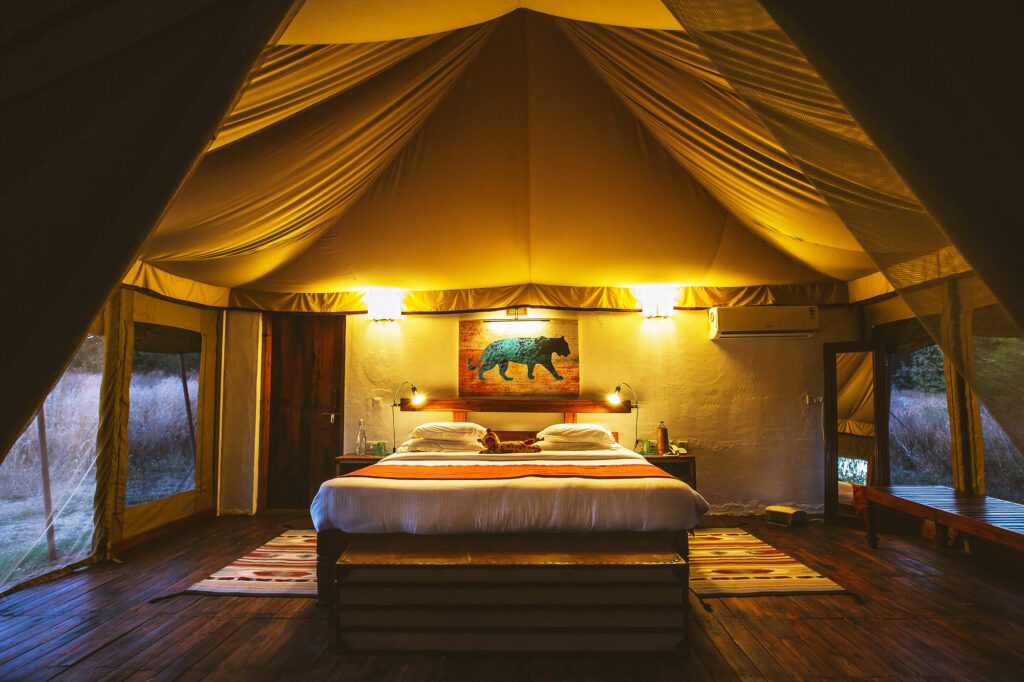
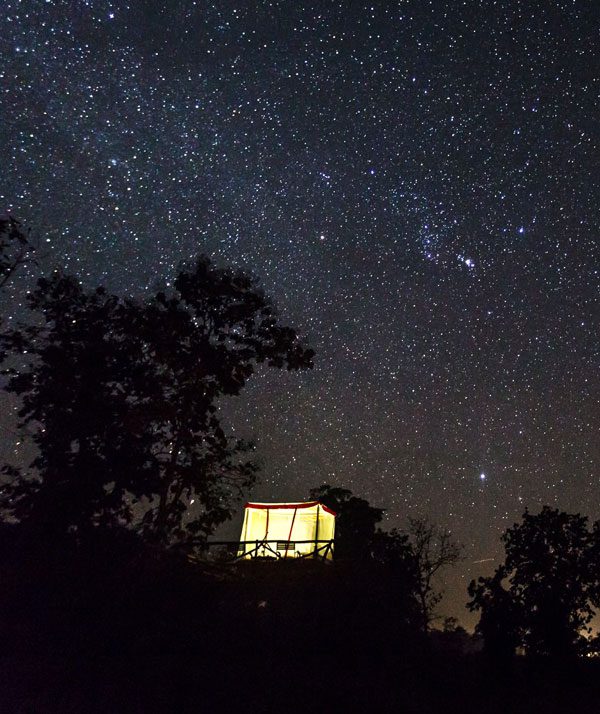
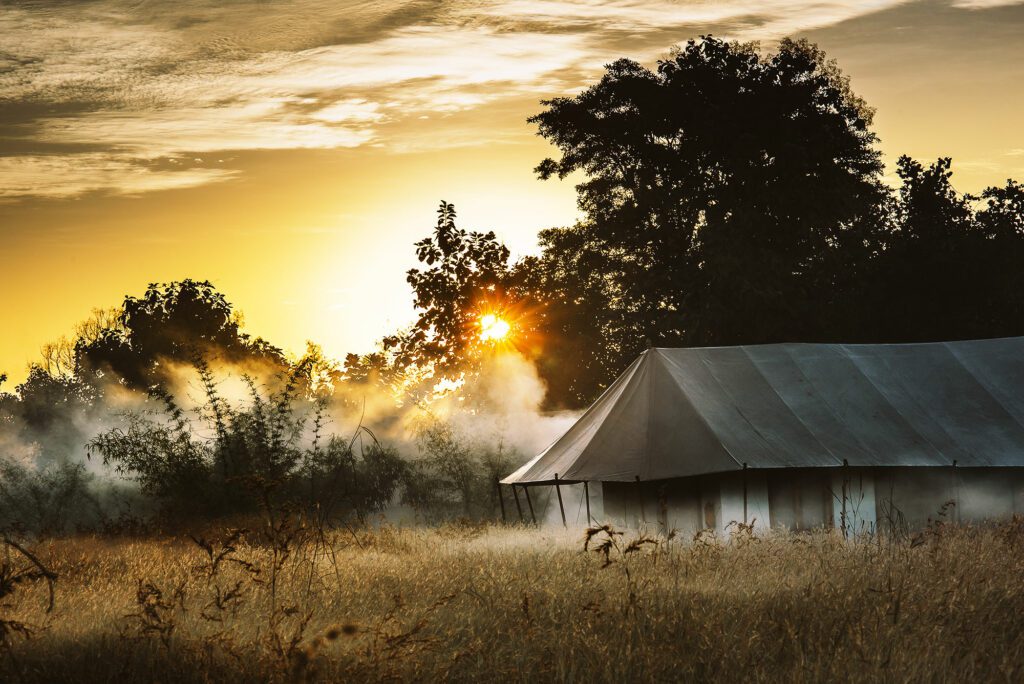
How tourism helps tiger conservation
Like all wildlife trips with Extraordinary Journeys, sustainability is paramount, and a tiger safari with one of our trusted partners is the most ethical way to view these magnificent animals. This is the way tigers are meant to be seen: thriving and in the wild with minimal human interference. Ecotourism has been crucial in protecting India’s tigers, and by supporting ethical tiger tourism in the area, the intrinsic value of the animals beyond what they’re worth to poachers is highlighted, which aids in their continued conservation.
Poaching, habitat loss, and human-tiger conflict have been a threat to these magnificent animals over the last century, and only 2,500 Bengal tigers remain in the wild, according to the World Wildlife Fund. This number is actually up from several decades ago, thanks in part to operators like Jamtara, whose roots are in conservation. Sankhala hopes to create wildlife corridors—which help to maintain a healthy tiger population and thriving ecosystem—in the area by establishing other camps and protecting the areas around them. Jamtara also founded the Tiger Trust in 1989, a non-profit organization that spreads awareness about tiger conservation, trains park staff, and provides health programs for local communities.
Sankhala and his team work to engage the community further by employing locals and supporting youth education initiatives so that people benefit from tiger tourism, which is essential in the survival of the parks and their wildlife. Guests also have the chance to visit the villages that sit at the hem of the park and create connections with local people. “That is the moment that will stay with you forever,” says Sankhala.
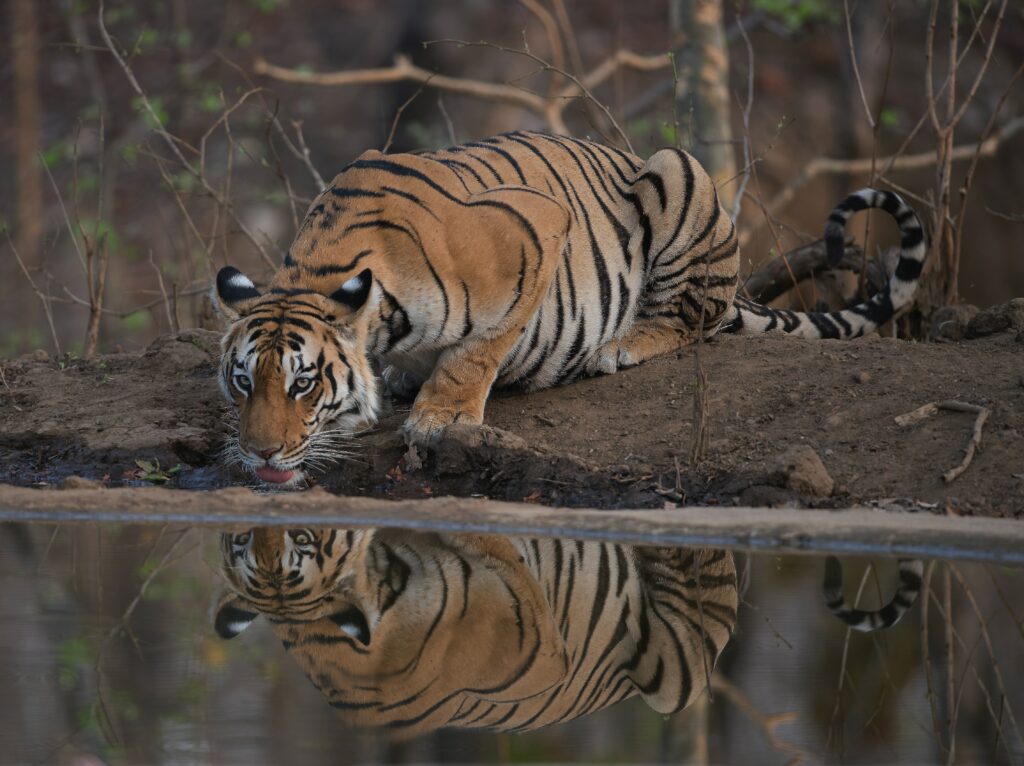
What to know before you go
The best time to visit central India is between November and March when the climate is dry and temperate. Even so, because travelers will spend most of their time outside on a tiger safari, dressing in layers is smart. Even on the warmest days, early-morning game drives can be chilly, but by mid-morning a blazing sun often calls for a sunhat. Although guides from Jamtara and other standout lodges in the area like Pench Tree Lodge and Banjaar Tola Tented Camp will be outfitted with everything guests need, pack a pair of binoculars to help out with spotting these tricky-to-track animals.
In order to disrupt the animals as little as possible on a game drive, it’s recommended to wear neutral clothing (tigers are especially reactive to red and pink), to speak in a low whisper, and avoid shouting through the excitement when a tiger is spotted. Visitors should also refrain from using a camera flash. All naturalist guides working in the park are also trained to know when visitors have spent enough time with a tiger and it’s time to leave them alone. All of these protocols ensure a tiger viewing experience that’s non-invasive and sustainable.
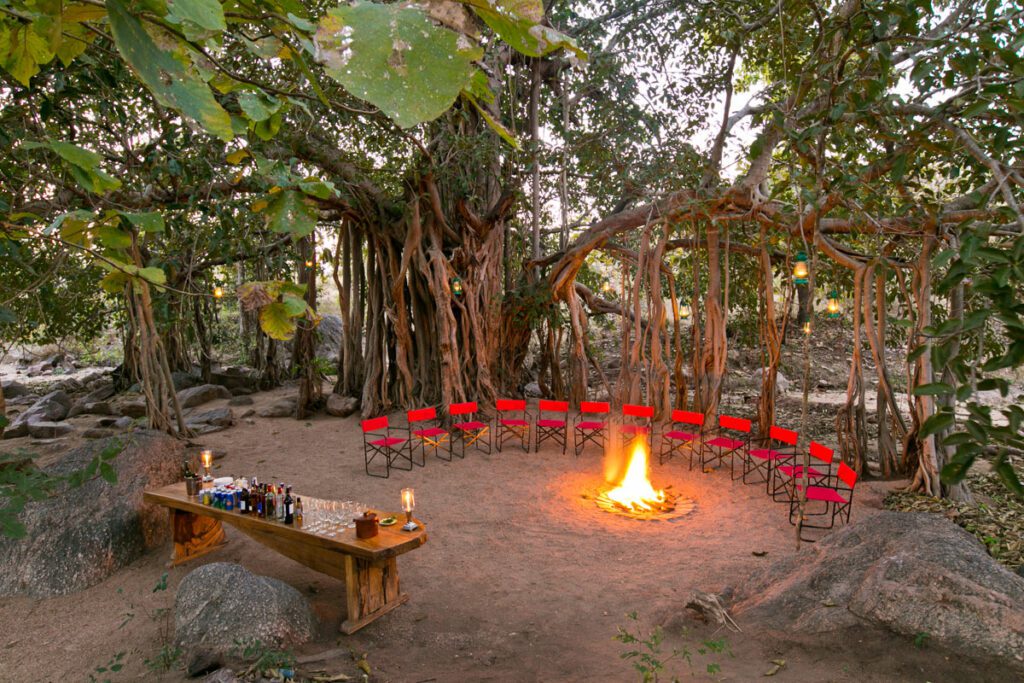
How to get there
From Delhi, visitors fly into either Bhopal or Nagpur airport. From there, it’s three to four hours by road into Pench National Park and neighboring parks, but the trek is worth it for one of the most powerful wildlife experiences on the planet.
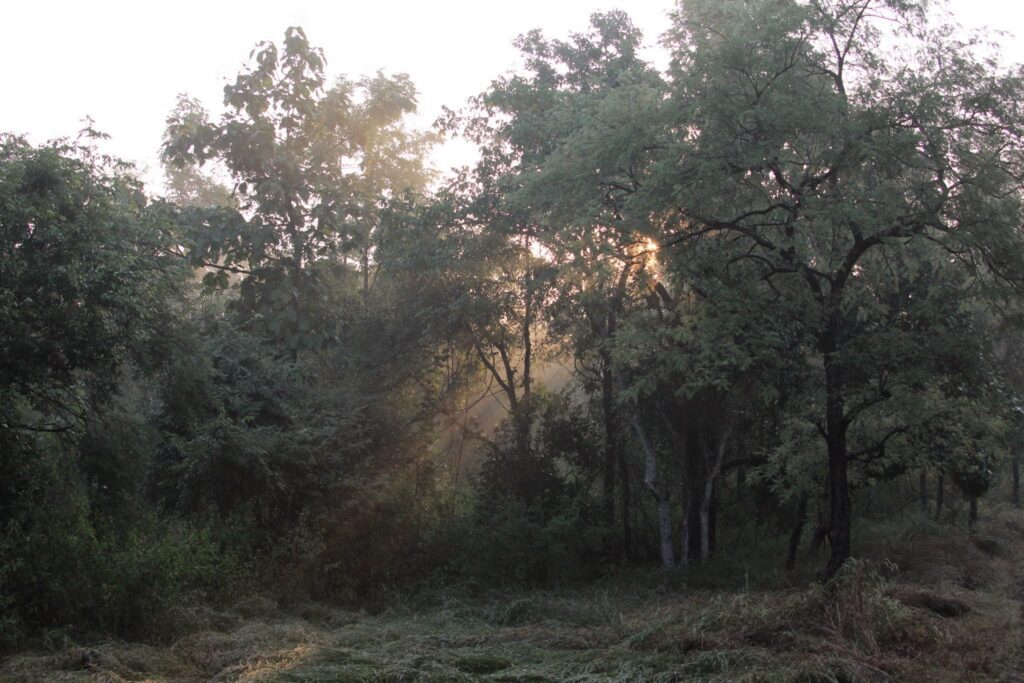
Check out some of our favorite India itineraries:
